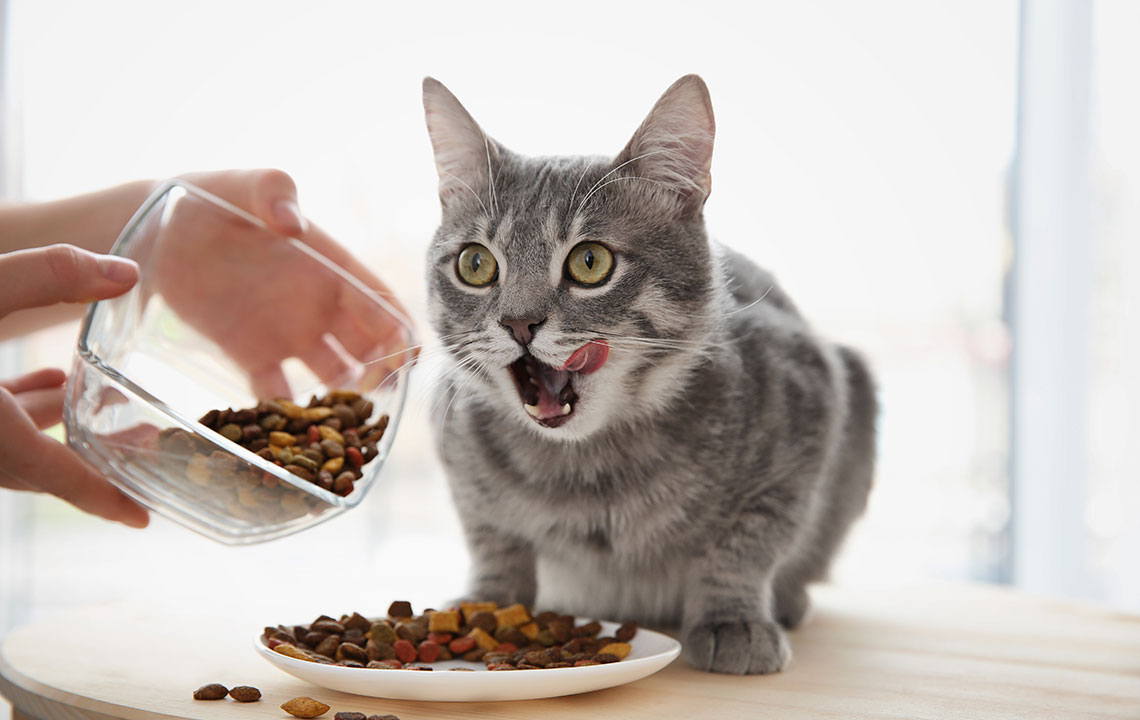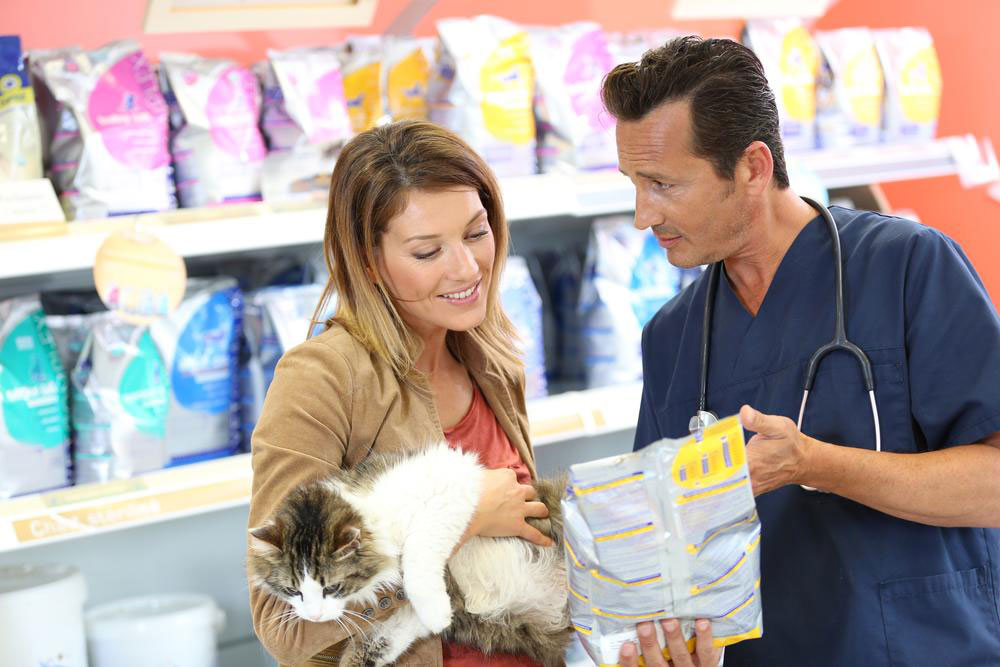Cat skin allergies and foods to control them
Skin allergies are quite common in cats. Pesky and bothersome, the allergies can range from constant itches, sneezes, to vomiting in extreme cases. Allergies indicate an adverse reaction of the cat’s immune system to some object or food. Many things may cause an adverse reaction in cats. However, with a little patience and care, you can treat it effectively. For instance, you can consider several kinds of cat food for skin allergies.

Common skin allergies in cats
- Abscess
An abscess is a common skin condition in cats. These are localized wounds on the surface of the skin. Cats tend to scrape themselves against random objects, animals, or other cats, causing the skin to rupture. This may get infected, causing an abscess. The treatment will depend on the kind and depth of infection. - Feline acne
Feline acne is more commonly known as blackheads, and these are typically found on the edges of the lips, and the underside of the chin. There are several reasons for cat acne. Chemicals present in shampoos, food containers, and water dishes are mainly to blame. - Ear mites
If you find your cat constantly shaking, tilting, or shaking their head, they may be struggling with ear mites. Another tell-tale sign is the existence of a brown waxy material close to the ear canal. Check for the appropriate cat food for skin allergies to alleviate this problem. - Food allergy dermatitis
Most cats do not do well with preservatives and artificial ingredients in food. If your cat falls in this category, you may want to watch out for dermatitis triggered by food allergies. This may appear as severe itching in the back, neck, and head. The cat may even experience swelling in the eyes. - Ringworm
This is one of the most contagious skin infections. It requires treatment by a vet and extensive sterilizing around your home. The infection appears as round patches, hair loss, and a red ring at the periphery. - Psychogenic alopecia
This condition is most likely a result of excessive self-grooming. It appears as thinning of fur on the back or the abdomen. In many cases, occupying or diverting the cat’s nervous energy will take care of the problem. However, you can provide appropriate cat food for skin allergies, and take care of it.
How to avoid allergy?
Always take the advice of a vet before you address the skin problems of your cat(s). While that is always the right approach, it makes sense to consider the cat’s diet too. If your cat is susceptible to skin allergies, consider switching to specialized cat food for skin allergies. There are several advantages to doing this.
- These foods are specially formulated and free from contaminants.
- Hypoallergenic cat food for skin allergies is broken down so that the body does not recognize the allergens.
- Some skin allergies are temporary, but others need close monitoring and life-long management. And for that, you need to tweak the cat’s diet.
- Even if the skin allergy is not nutrition-related, the right cat food for skin allergies will help manage the symptoms.
Triggers of skin allergies in cats
There are several triggers for a skin allergy in cats. Among the many triggers, these are the most common ones.
- Food intolerance or allergy
It is common to see a cat react adversely to new ingredients or a new kind of food. This is especially true when they are exposed to a food they have not been exposed to previously. A quick evaluation by a vet will tell you what might be the best cat food for skin allergies. - Pollen or dust allergy
Atopy is a condition that is quite common in humans. There is a tendency to develop allergies to environmental allergens in this case. However, in cases of cats, it is far more challenging to diagnose. The vet typically arrives at this diagnosis by ruling out other possible causes of pruritus. Generally, opting for the best cat food for skin allergies will help reverse some of the problems. - Insect bites
Mosquitoes can cause Eosinophilic Granuloma in cats. Insects, such as bees, midges, fleas, or wasps, may bite cats. When the cat’s skin meets the saliva of the insect, it tends to cause a severe infection or reaction. Such an allergy is typically seen in the hairless parts of the cat’s body. - Bacterial infections
Bacterial infections can be caused due to several reasons. While it may not be relevant, good quality cat food for skin allergies can help manage the problem to a great extent. - Mites
A simple ear inflammation called Otitis Externa may be the reason why your cat has a skin problem. While mites primarily cause an ear infection, they may wander around in the ear, neck, and face regions, creating a form of pruritus skin infection. While this is centralized around this area, if not taken care of, such an infection may spread to other parts of the body.
Signs of skin allergies and infections in cats
Ideally, your cat’s skin should be soft (without flakes) and smooth. The skin must not be too oily or dry. Any redness or irritation is not normal, and it is best to investigate it further. There are several revealing signs of skin infection in cats. Here’s what you need to look out for.
- Pimples, acne, or breakouts on the skin is a sign that there is something wrong.
- Miliary dermatitis is a condition where the skin exhibits crusty patches. It may also present itself as hardened skin or scabs all over the body of the cat.
- Your cat might experience loss of hair. Sometimes, this is described as symmetrical hair loss.
- Excessive itching and self-inflicted damage to the skin due to the itching may be noticed.
- Eosinophilic Granuloma is quite common in cats. It presents itself as skin lesions, typically seen in the upper lip region, oral cavity, and in some cases, all over the body.
- Skin odor is also a common sign that the cat is struggling with an infection that needs investigation.
- Licking and rubbing may seem like a part of the normal grooming process. However, if these actions seem excessive, a vet’s quick evaluation will tell you if it is a skin problem.
Best cat foods to control skin allergies
- Royal Canin Hypoallergenic HP Dry Diet
A hypoallergenic diet is essentially given to cats to rule out several issues or problems. - Ingredients
It is essentially made of hydrolyzed soy proteins, consisting of limited ingredients. It is composed of low molecular weight peptides that will ensure that it is absorbed easily by the feline’s body without triggering a reaction from the immune system. Vitamin B and certain other amino acids help to keep the cat’s skin barrier strong and healthy. Omega-3 fatty acids, EPA, and DHA are the additional supplements, but they promote the cat’s skin and coat. Besides, the formulation contains healthy fibers to support easy and effective digestion. - Benefits
- One of the biggest benefits of switching to this cat food for skin allergies is that it reduces GI and skin reactions. Other pet foods contain certain commonly used proteins that are harder to digest.
- This formulation works explicitly to make the digestion process easier. The protein is broken down, so your cat’s system does not recognize the allergen.
- Additional supplements take care of the overall health of the cat too.
- Hill’s z/d Cat Food for Allergies
- Ingredients
This is a wet cat food that is formulated to manage a cat’s sensitivity towards food. It also aims to reduce the adverse reactions to foods of any kind. The main component of this food is a combination of digestible carbohydrates and fats that works to reduce the workload of the intestines. The formula also features a blend of 6 fatty acids and a certain amount of omega-3. It does not feature any animal protein (original form) and includes a healthy dose of antioxidants to improve the immune system and the cat’s skin barrier. - Benefits
- Allergic skin infections and gastrointestinal stress go hand-in-hand. This cat food for skin allergies tackles this effectively by fortifying the formula with antioxidants.
- The source of the only protein used in this formula is chicken liver. However, it is in a highly hydrolyzed form. This ensures that even those cats that cannot handle this protein are protected from the allergy.
- The digestible food is safe and is considered great even for those cats that suffer from pancreatitis and/or IBD.
- Hill’s d/d Skin and Food Sensitivities — Canned
- Ingredients
The food does not contain soy, grains, and gluten. Typically, if you are dealing with a cat with a problem, then this cat food for skin allergies will work wonders. It contains a healthy dose of antioxidants and fatty acids so that the skin of your cat stays shiny and healthy all the time. This is one of the best “limited ingredient” diets that you must consider when planning to switch to cat food for skin allergies. - Benefits
- Do you have a fussy cat? Well, consider this as a perfect solution, as you try to feed them a nutritious meal.
- If your cat suffers from dermatitis, this formula will prevent allergic skin reactions and help support the immune system. This is also a great option for cats with sensitive stomachs.
- This cat food is easily digestible, and therefore, a good option if your cat is susceptible to vomiting and diarrhea.
- This is not hydrolyzed food, which means that the taste is better and more acceptable. Fussy cats will appreciate the texture and taste of this cat food.
- Blue Buffalo Basics Grain-Free Food for Cats with Skin Conditions
- Ingredients
One of the primary protein ingredients in this formula is duck. The protein is fortified with the addition of peas and pumpkin too. This food is a tasty blend of vitamins, oxidants, and minerals. - Benefits
- The biggest benefit of this formula is that it avoids most of the ingredients that tend to cause trouble. For instance, there is no chicken, beef, eggs, milk, wheat, corn, or soy.
- Pumpkin and peas are easily digestible, making them a perfect addition to this formula. Further, it is easy on the cat’s gut and improves stool quality.
- The formula helps to maintain an ideal oxidative balance, which makes it healthy.
- This cat food is suitable for cats of any age. Whether you have a kitten or an adult cat, make this part of their regular diet.
- Instinct Limited Cat Food for Allergies
- Ingredients
This is a balanced and nourishing option for cats with sensitive stomachs and skin allergies. Turkey is the main source of protein in this cat food. The food is a complete diet on its own, but it can be used as a topper or a mixer. It does not contain any of the notorious “allergy triggers”- chicken, beef, soy, grains, eggs, or fish. - Benefits
- It is popular as it is a wet food that has the most palatable texture and taste.
- The food is made with real meat and whole-food ingredients.
- It offers balanced nutrition that is packed with natural omegas. This not only helps to keep allergies at bay but also boosts the immune system effectively.
- The protein used is specifically “cage-free” to ensure that it does not trigger any skin allergies in cats.
If you have a feline companion that is picky about eating or is prone to allergies, make sure that you pick the right cat food for skin allergies. A vet can also examine your pet and guide you more.




